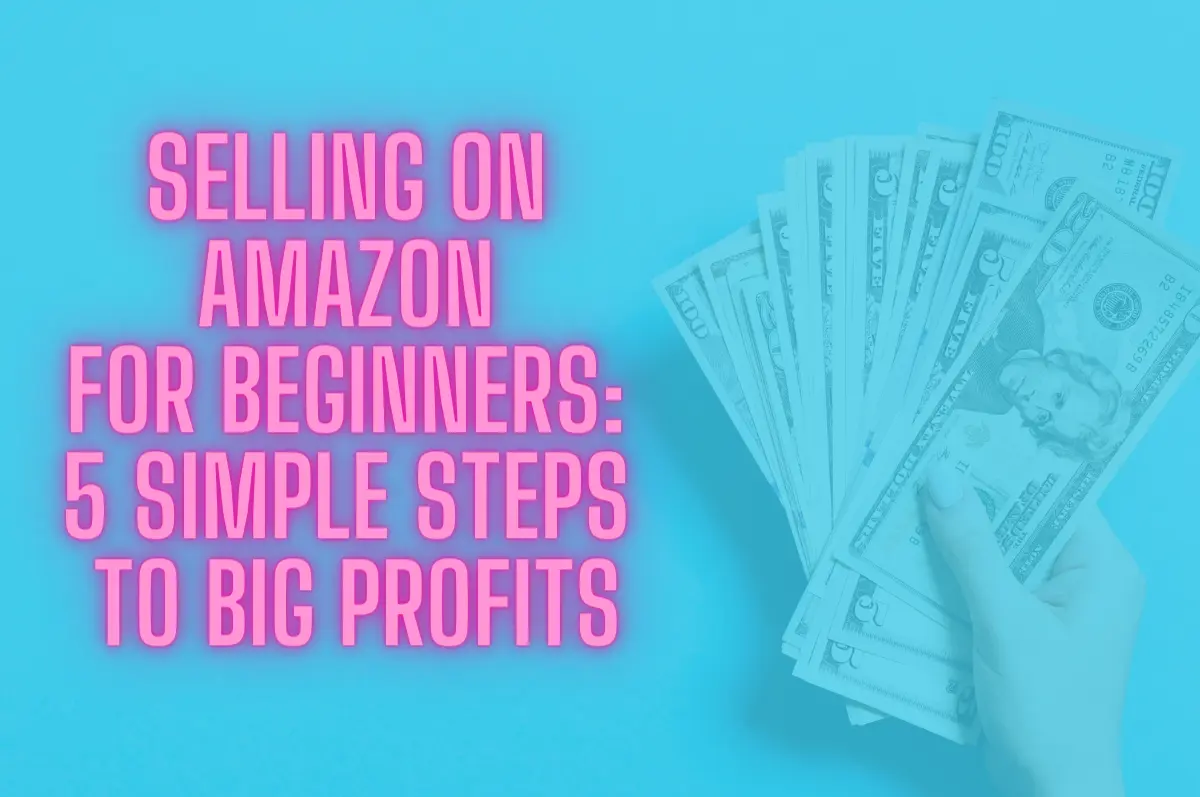Whether you own an e-commerce store and are looking to expand, or you want to dip your toes into the e-commerce world, Amazon is chock-full of money-making opportunities.
Now for the big question: How do I grow as an Amazon FBA newbie?
As an Amazon beginner, finding your way to success feels like standing at the bottom of Mount Everest looking up. There’s a lot of competition, for sure. Plus, when you’re just starting, you have no reputation, seller metrics, or experience to support you in your journey. That shouldn’t stop you if you dream of running a profitable Amazon FBA venture. The reality is that starting your journey on the right path can have a lot to do with how quickly you ascend.
Here’s 5 simple steps you should take that will have you sprinting in no time:
Start with a plan
Prior preparation prevents poor performance, right? Planning is everything when you’re starting something new. In this case, “planning” includes choosing an Amazon selling strategy.
Not all Amazon FBA selling strategies are created equal, and not all Amazon sellers are the same. It really depends on what you plan to sell. These include:
- Private label products (pre-manufactured items that feature your brand and label)
- Wholesale goods (mass-produced items bought in bulk that you sell individually for more than what you paid)
- Drop shipped items (the manufacturer fulfills and ships the order once a customer purchases it)
- Reselling items at a discount (purchases you made from outlets, bargain websites, etc.)
- Handmade items (your own designs or crafts)
How you approach your Amazon business is up to you. Even though a high percentage of Amazon FBA sellers opt for the private label option. You can buy products in bulk to maximize your savings per item, then resell each one for a profit.
Choosing the right products
Once you choose your selling strategy, you need to find products that fit with your method. There are a lot of pitfalls to this process, and newbies are likely to make a lot of them if they don’t do their homework first. Luckily, since you’re reading this guide, you can avoid some of the biggest traps that will delay your progress.
First, remember that your Amazon products are not about you – they’re about your buyers! This means that the products you choose may not necessarily appeal to you or be something you’d buy. This is really hard for new sellers to wrap their heads around, but consider that there’s a whole world of people out there with needs and wants and likes beyond your own.
A better approach when choosing products to sell on Amazon is to consider what’s “in” or trending. Selling mainstream products is always a good option.
One mistake sellers make is not taking profit margin into account. Sellers pay fees to sell on Amazon, so you need to choose products that aren’t going to put you in the red. To calculate this, you need to consider the cost of the product, Amazon fees, and shipping, then figure out how much you’ll need to sell the product for to make a profit. Then, compare that price to similar products on Amazon. If they’re selling for way less than what you could sell it for, it’s probably not a good product for you.
Last but not least, don’t forget to scope out your competitors. When too many sellers are selling the same item, sales usually come down to price. You don’t want to slash your margin just to get the sale. The best practice is to choose “evergreen” products that people buy year-round.
Overcome Restricted Categories and Gated Products
As you’re combing through product ideas and choices, we need to talk about the possibility that some of those products won’t make it to your Amazon listing. That’s because there are several products and categories on Amazon that are gated or restricted. This means you’ll need to jump through extra hoops to get Amazon’s permission to sell certain items.
Gated categories are closed off to the general population of Amazon FBA sellers. This is because certain products require a higher level of expertise to sell, such as supplements, fine art, watches, and electronics.
Other examples of gated categories include but is not limited to:
- Safety-related items
- Health supplements
- Pet food and care products
- Baby gear and other items
- Food
- Beauty care products
- And many more
Amazon has this system in place to ensure that only authentic, high-quality items in these categories are sold. Because these products are likely to be a part of knock-offs, Amazon has extra vetting measures in place. To gain access for these restricted brands and categories, you’ll need to provide extra documentation for your products.
Amazon sellers typically overlook gated opportunities since it requires extra work. Because they are new and do not have a seller reputation, they think their chances of getting their Amazon account ungated is a huge leap.
Create an Amazon Seller Account
So far, we’ve laid a lot of groundwork to get you up and running on Amazon. The next step is to sign up for your Amazon seller account.
Any business owner can create an Amazon seller account. You will need to have the following pieces of information ready to submit:
- Your business name, address, and contact details
- Phone number
- Email address
- Credit card
- Tax ID (Federal and State)
When you are creating your account, you will also need to choose between the professional or individual seller plans. Typically, it’s recommended that you choose an individual plan if you think you will sell 40 units or less per month.
On the individual plan, you pay a flat $0.99 per item that sells. The professional plan is a flat $39.99 per month regardless of how many items you sell. That’s why it’s more cost effective if you’re doing more than a 40-unit monthly volume.
Write keyword-rich product descriptions
Once you have established your seller account, you can start listing your products for sale. This is the last step you’ll need to accomplish before you can actually start making sales.
If you followed this guide in order, this part should go rather quickly. You already know which products you’re going to sell and how much you need to charge to make a profit. However, simply having products that people are searching for is only part of the equation. They also need to be able to find your listing, ideally before they find your competitors.
This is where keyword research comes into play. When applied to Amazon product listings, strategically placed keywords are a big part of a strong listing. You will want to include a keyword related to your product in the title, as well as throughout the body of your description.
You should also use high quality images and product videos. Multiple images that capture multiple angles of your product is an ideal approach. And research shows 73% of consumers are more likely to buy a product after watching a video about it.
A good product listing is descriptive and helps to answer questions the buyer may have about the product. This sets the right expectations so they know what they are buying, and may help to reduce your return rate as a result.
Final thoughts
Beginners CAN Make It Big on Amazon. There are a lot of moving parts to Amazon FBA for beginners. but if you put one foot in front of the other, eventually you’ll realize just how much progress you’ve made.
All the top sellers on Amazon started exactly where you are: at the bottom. Don’t be afraid of the competition. As long as you focus on being the best at what you do, it will be hard not to see your efforts pay off.
Reminder: Before you can sell products in all the categories on Amazon, you’ll need to get ungated by the Ungating Wizard. With years of experience in ungating, the Ungating Wizard can get your ungated in any of the restricted categories hassle-free so you can focus on the important aspects of your business like marketing and logistics.
Visit the Ungating Wizard Blog for more updates.



